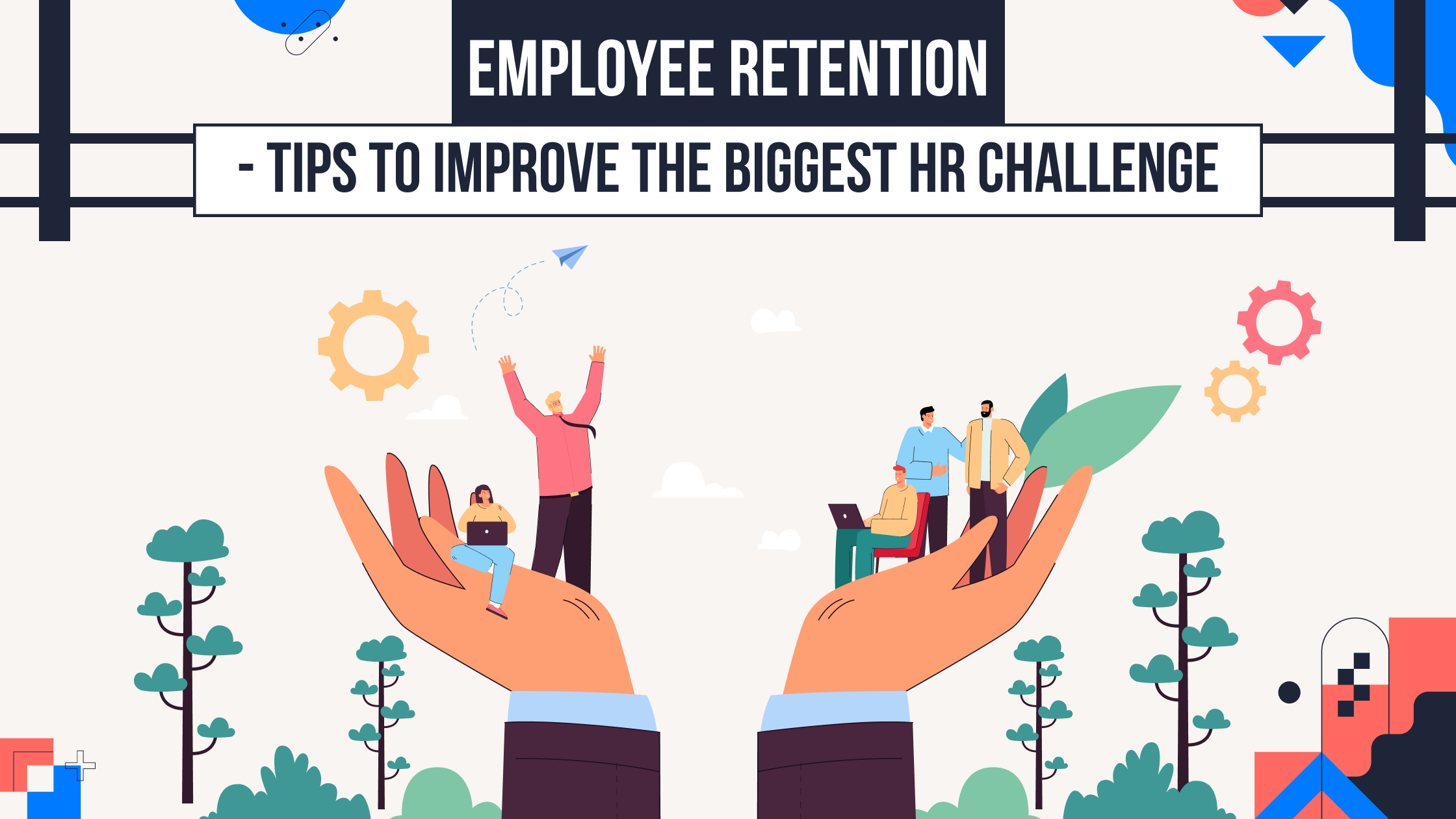UBS App is now Superworks

It is undeniable that employee turnover is expensive. The total estimated cost of losing a single position to turnover ranges from 30 percent of the annual salary of the hourly employees to 150 percent. The cost can be higher for sales and senior leadership positions.
Employee Retention is a continuous challenge for both the managers and the HRs.
You spend time scanning multiple resumes, interviewing candidates, hiring, and onboarding them. You invest in people, provide them training, and expect to enjoy the fruits of your hard work – just to lose them to a competitor.
Just think where are you going wrong? In other words, how can you retain employees for the long term? Is that possible in today’s competitive job market?
Yes, employee retention is possible. But how? The answer lies in this blog. In this blog, we will cover a few tips that you can use to improve employee retention at your firm.
Let’s dig out!!
Employee Retention in HRM is the strategic goal of keeping productive and talented employees and reducing the company’s turnover by fostering a quality work environment to promote engagement, appreciate deserving employees, provide competitive pay and benefits, and encourage an appreciative work-life balance.
Employers are especially interested in keeping workers on board in times of low unemployment and increased competition for talent. Organizations utilize human resources technology for recruiting, onboarding, engaging, and rewarding staff. They also provide increased work flexibility and cutting-edge benefits like physical and financial wellness programs to attract and keep top talent.

A good quality workplace culture encourages the efforts and engagement of all employees. An organization’s culture becomes stagnant only when the workplace feels underappreciated.
To define culture in a layman’s language, it is, “how we do things around here”. Each and every entity has a unique set of values, rules, vision, and even unwritten routines that eventually add up to their culture.
The culture of the company determines how employees handle problems, engage with their co-workers, and perform their day-to-day activities. Because of such reasons, it is essential to align your employees and the company’s culture from the very initial stage.

If you want to keep your high-performing talents, you must pay them well. A good salary is one of the major reasons behind employees’ motivation to come to the office. Employee salaries have a significant impact on the organization’s retention rate. Apart from that, the cost of searching for new candidates, recruiting, and training them would be more than an employee’s monthly salary.
With the increasing number of job search websites like LinkedIn and Google Jobs, employees can access the database and compare the salaries of different companies for the same role.
When monetary rewards are limited, employers should opt for a total rewards package, which can include opportunities for training and development, promotions, incentives, and other recognition activities. These elements encourage workers to stay in their current positions and prevent internal disruption in the company.

Offer remote work options, flexible timing, and allow leaves when an employee wants. This will create an environment that will put you far ahead of your peers. For millennials and Gen Z employees, flexibility has a higher priority than salary. It helps people keep a healthy work-life balance.
Flexibility retains the existing and attracts new employees and makes them productive by offering them the choice to work whenever and wherever they want. When a person practices flexibility, they are more likely to be versatile and easy respondents to change. They are more flexible to adapt to any unexpected change or event.

Employees perceive your efforts to empower them by giving them new abilities as investments, and this fosters loyalty by forging a close emotional connection.
Programs for learning and development (L&D) are a desirable perk for the current generation. It’s one of the top benefits that young employees seek in new positions.
L&D initiatives give organizations the chance to promote their cultures and develop their employer brands.

Offering enticing rewards is advantageous for both the recruitment and retention of great employees. Comparatively to businesses that don’t, those who use perks as a strategy for attracting and keeping employees reported greater overall company performance and above-average efficacy in both recruitment and retention.
Employee loyalty to an employer is attributed in 78% of cases to the benefits offered. You certainly already provide some benefits, but are they the appropriate ones? You need to find out what your employees really want if you want to develop a benefits package that will aid in keeping top talent.
You can start to understand what’s important to your employees and what you can offer by conducting surveys and talking to your staff.

When the right fit is employed for a position, recruiters looking for yet another professional or undergoing additional job searches can be avoided.
The right fit employee who also aligns with your company’s culture will continuously develop their skills and improve their performance within the organization, once they are hired.
This will eventually increase employee retention in the long term and also give better growth and productivity.

Recognition is important. Recognizing employees lets them know that their hard work, achievements, and contributions are being noticed by the employer. Just a small sentence like “We appreciate your hard work today. You really went above and beyond to achieve this.” may put a smile on their face and motivate them to work more.
When managers give regular recognition and encourage competitive recognition, they help foster a strong culture and create a positive and motivating culture for everyone in the workplace. Nearly two third of the employees are likely to leave their job if they feel unappreciated for their work.
When the employees feel that their contributions are being recognized by the manager, it makes them feel valued and respected thereby making them unlikely to look for a better employment opportunity elsewhere.
Companies around the world struggle to attract and retain the top talents of the organization. Some do it by offering exciting benefits and some by developing new workplace models for easy adaption of the employees.
By far, investing in employees is the best solution. The creation and maintenance of a positive work environment where people can flourish contribute to employee satisfaction.
A sense of trust and loyalty is ingrained when you invest in your own employees and continue to assist them throughout the entire process, and this eventually results in employee retention.
The employee experience can be improved by incorporating HR technologies like UBS into daily tasks, which raises HR employee retention rates.
Employee Retention is the process a company follows to make sure its employees don't leave their positions.
Workplace flexibility, employee benefit, career development, personalized employee experience, and good manager-employee relationship are the 5 main drivers of employee retention.
There are several ways to retain employees in your organization some of which are explained above in the blog. Get in touch with UBS to know more about employee retention.
Wellness Programs, employee goals, evaluation, teamwork, and rewards are some examples of employee retention.
We are here to help you find a solution that suits your business need.
Get a visual representation of how we work!
Schedule DemoOur sales expert is just one call away to meet your needs.
Get In TouchHave a question?
Chat with Us